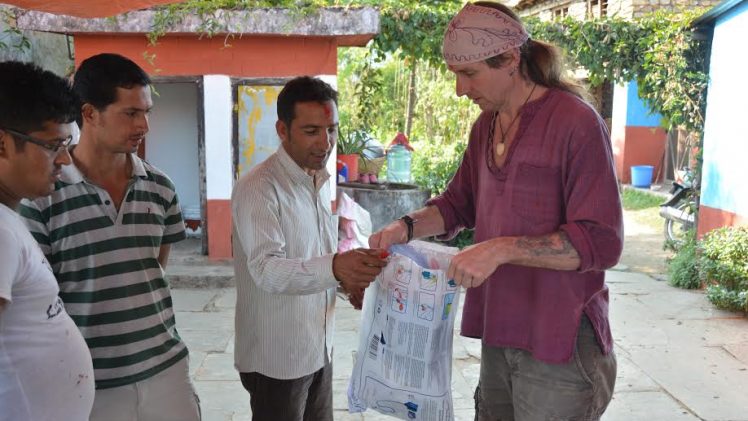ICO’s team, led by Bob Wall, set out to help the villagers of Lahachowk Nepal to improve the quality of their water supply, which showed bacterial contamination, namely E. coli bacteria.
They identified several parameters that would need to be met by any system to be tested.
- relatively simple
- low to no maintenance
- cost-effective (especially in testing period)
Bob and his team decided on an end use filtration system manufactured by Lifestraw that would be tested in several households within the village. Following a water quality questionnaire that was conducted with many families in the village, the team chose, at random, four families that would receive the in-house water filtration systems.
The families received instruction on filtration function and how to ensure the water stayed clean through until consumption as well as education on hygiene to assist in the continued cleanliness of the water supply.
The team was welcomed into all houses and honoured with the openness of the villagers. They were very concerned about water quality for their families, recognized the relationship between clean water and health, but had a fundamental misunderstanding of water filtration principles. What we achieved with the questionnaire and follow up education was that the villagers were excited about the prospect of having clean drinking water available and were engaged in the process.
The goal was to get monthly reports from a chosen village resident who would give us feedback on filtration usage, any noticeable differences in water quality, feelings of health, anything that would indicate an improvement, and if any families were experiencing difficulties with the units. Based on those reports, we learned the following:
- Usage varied considerably. 1/4 families used the filter every time, 2/4 families used the filter sometimes, and 1/4 families used the filter infrequently.
- 4/4 families like having access to clean water and would like to continue using the filters.
- 4/4 families say the filter is too slow.
- 4/4 families say the filter is too expensive to repurchase.
- 3/4 families say the filter speed did not change over time. 1/4 say the filter slowed down over time.
- 2/4 families say they saw a small improvement in the number of sick days. The remaining 2/4 saw no change in the number of sick days.
- 2/4 families say the bucket for the filter is too small. The remaining 2/4 families did not comment on the bucket size.
Lahachowk is predominantly a sustenance based village, so often times harvest, planting, or a massive list of other needs must be met before most have the opportunity to check and relay quantifiable information in any form. This was undoubtedly our biggest challenge. We soon realized that to get the consistency and depth of reporting we would need for any kind of statistic significance, we would have to physically be in the village to collect it ourselves, which was unrealistic, so reporting was sporadic at best and our data was very limited.
Without live feedback, our conversations revolved around possibilities and possible downfalls of any system we had considered. Many of those discussions circled back to education, mainly the importance of hand washing and container cleanliness. We watched our chosen families joyfully pour the newly purified water – the tap spewing out gloriously beautifully clean water – only to see it fall into a filthy bucket. Beautiful and sad at the same time. We sat conflicted, knowing the villagers wanted this as much as we did.
We learned much from this endeavor; however, we realized that education needed to precede filtration and would be required as an ongoing commitment by the villagers, ICO, and local government.
Thank you to the villagers of Lahachowk Nepal, ICO’s volunteers, and all the generous donors who made this initiative possible.


